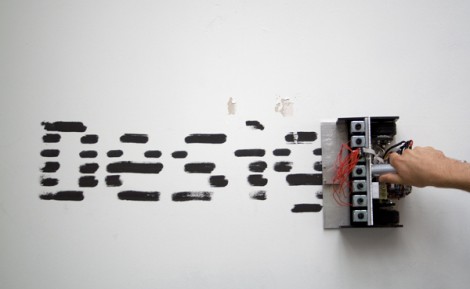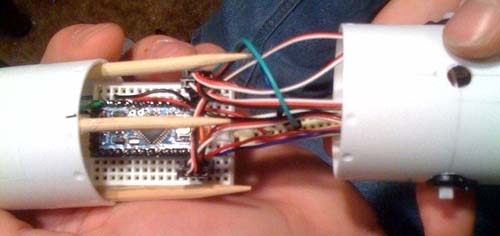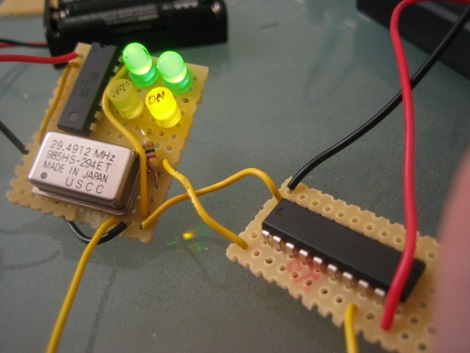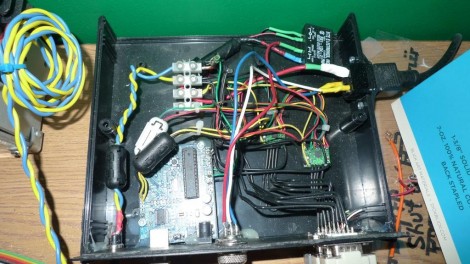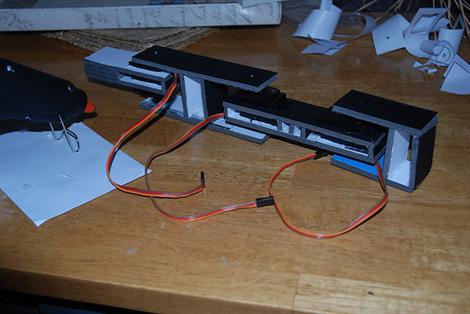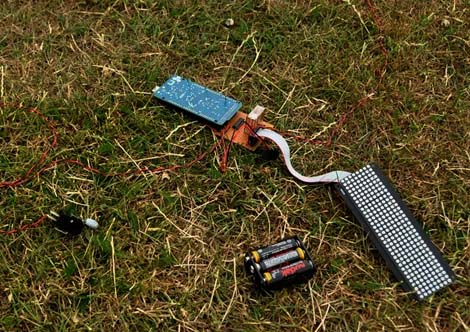The txtBomber is a high-tech graffiti printer developed by [Felix Vorreiter]. Details are a bit scarce but the video clip after the break proves that this works quite well. [Felix] admits this is Arduino powered but we’re going to have to guess at the rest of the setup from the pictures. He says there are built-in-pens so we’d bet there’s a felt-tip type of thing going on and those look like seven solenoids that actuate them. He posted a picture of the handle side of the device and we can make out two wheels that are connected to LEGO gears. This tracks movement of the txtBomber across a surface in order to synchronize the printing process. There’s no sign of an LCD so it looks like you have to pre-program the messages before you go out into the field.
This is akin to the Chalkbot, but the messages that leaves wash away with the rain. This one seems like it might get you into some trouble if you get caught leaving permanent tags around the neighborhood.

